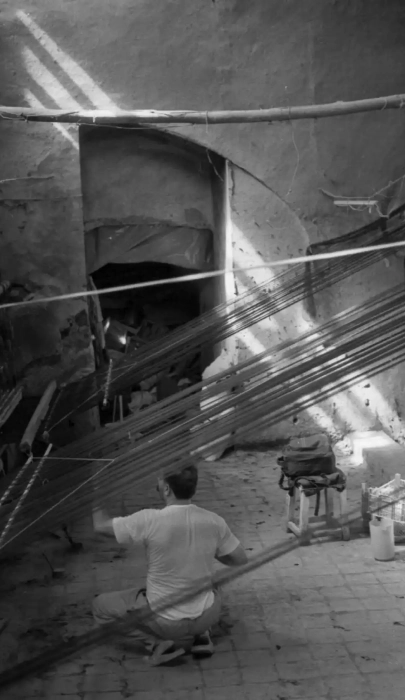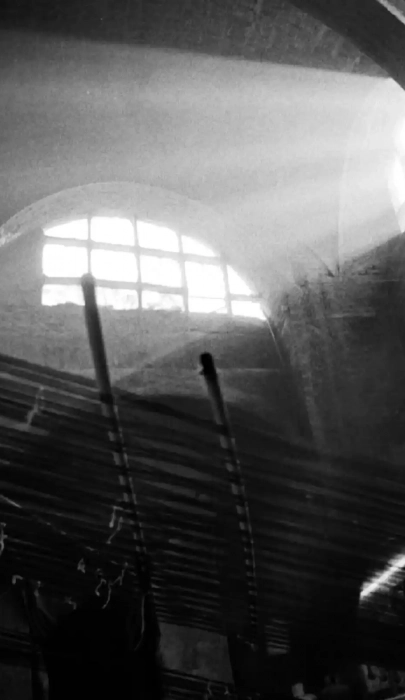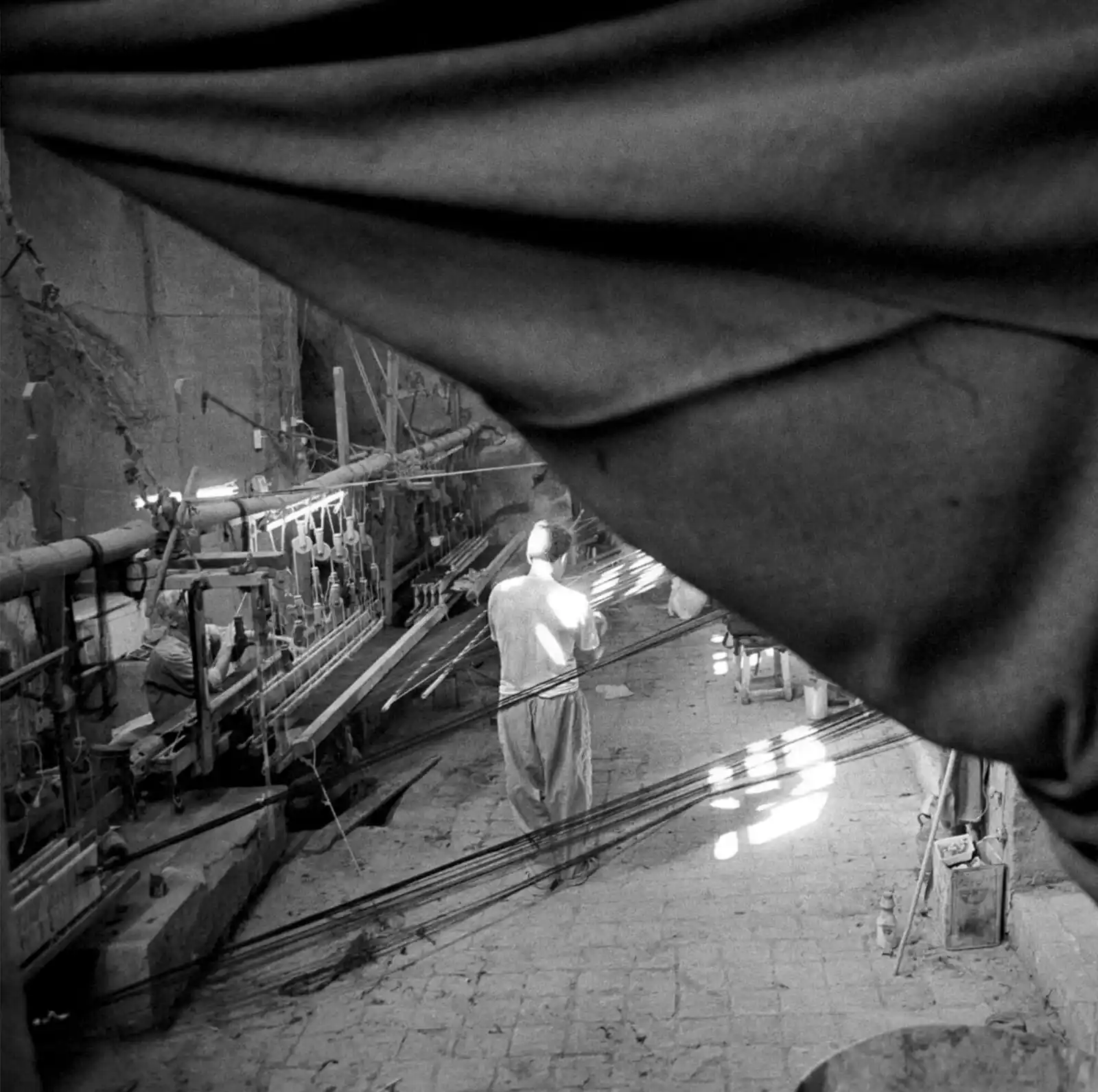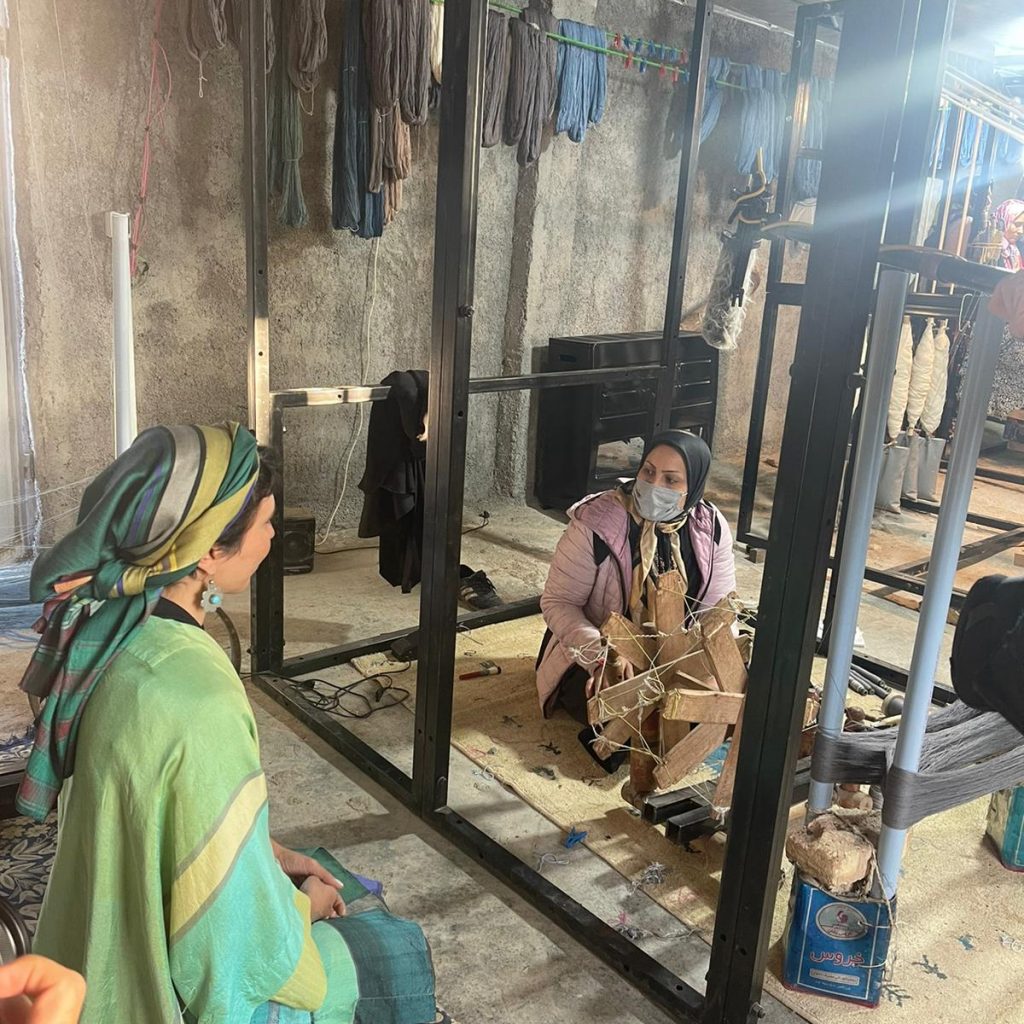The colors and paints, that's where the history lives.
"Each city had its own unique design, and the whole city worked to create just one precious carpet," says Vida Diba, an Iranian designer now naturalised in Italy. "You could guess from the pattern alone where a particular carpet was made: elaborate geometries are a clear sign of an object made in Tabriz, and the most precious of all come from Ghilan". She continues: "Not only that, but the colours and tinctures expressed the living history of those who made it. For example, if you saw a black thread through the carpet, you would have known that someone had died during the making process, and the other artists decided to remember the dead author by weaving his own story into the carpet".

Kashan, Iran, Photos by Mohammadreza Shahrokhi Nejad

Kashan, Iran, Photos by Mohammadreza Shahrokhi Nejad
Kashan, Iran, Photos by Mohammadreza Shahrokhi Nejad
Kashan, Iran, Photos by Mohammadreza Shahrokhi Nejad
Memory and skills of Iranian artisans
Many centuries have passed since the golden age of Persia, but the tradition of luxury carpets has remained in the memory and skill of Iranian artisans, albeit diminished. With the advent of modern technology and industrial products, the art of traditional carpet weaving has become more of a niche market. "The most part of Iranian designers and artists see their history through the lens of modernity," says Vida Diba, "something that belongs to the past and is not worth being associated with. The old art has become even more legacy of the elders, with many artisans unsure if anyone will inherit their skills and passion after they die.
This is why the work of Iranian designer Azadeh Yasaman Nabizadeh is so special; her creations not only celebrate Persian artistry but also echo the rich history of silk as a bridge between the Middle East and Europe. Born in 1978, Azadeh's journey into the world of textiles began at the tender age of nine, inspired by her mother's dressmaking. At sixteen, she held her first clothing exhibition to showcase her burgeoning talent. Her academic pursuits in graphics and later clothing and fabric design at university deepened her understanding of textile art. It was there that she mastered the loom, transforming her sophisticated patterns into wearable art. Her debut collection featured woven fabrics embellished with flora, gold work, stone embroidery, tapestry, wool, thread and, above all, silk - a medium that has long been a symbol of luxury and cultural exchange.
Kashan, Iran, Photos by Mohammadreza Shahrokhi Nejad
"Azadeh has always believed in the unique talent of the old artisans," says Vida Diba, "and have given them a purpose, infusing the ancient art with the new blood of modern designers, architects and tailors. She has begun to build the entire supply chain, from the collection of raw materials such as mulberry silk to the high-end production of design objects”. Silk's journey from East to West is a testament to its role as a conduit for cultural and artistic exchange. The ancient Silk Roads facilitated not only the trade of this precious fabric, but also the intermingling of ideas, religions and artistic techniques between Asia, the Middle East and Europe.
"I have high hopes for the end result of their efforts," says Vida Diba confidently, "Azadeh and her people have such a range of talents that this little miracle cannot go unnoticed for long. The primary challenge confronting her compatriots pertains to establishing communication with prominent luxury brands, a feat that is rendered arduous by the regulatory disparities between Europe and Iran. Vida, who is a close friend of Azadeh, has worked tirelessly to make such a meeting between these two realities possible. Unfortunately, her efforts have so far been in vain. But the story does not end here. Azadeh Yasaman's work embodies a legacy of intercultural dialogue. Her designs are a contemporary reflection of traditional Persian craftsmanship infused with modern sensibility. By reviving ancient weaving techniques and motifs, she not only preserves Iran's rich textile heritage, but also contributes to the ongoing narrative of silk as a medium of cultural connection. Her philosophy emphasises the importance of passing on artisanal knowledge to future generations to ensure that the "bundle of our culture" remains vibrant and relevant.

Kashan, Iran, Photos by Mohammadreza Shahrokhi Nejad

Photo by Niluofar Taghizadeh
The European Union recognises the importance of such cultural exchanges. Initiatives to preserve and promote our common heritage underline the importance of training, skills development and knowledge transfer between Europe and its global partners, especially with regard to silk heritage. These efforts not only preserve traditional crafts but also promote mutual understanding and appreciation of different cultures, helping to maintain a peaceful environment between neighbouring populations, as was in the past along the Silk Road. In essence, the work of designers like Azadeh Yasaman serves as a living bridge between East and West, past and present. Through the timeless medium of silk, she weaves stories that celebrate shared histories and inspires future collaborations across cultures It is to be hoped that this bridge can one day be institutionalised, perhaps with the help of European projects whose scope extends beyond the borders of the European Union, such as ARACNE.

